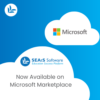Introduction to Vocational Education Management
Vocational Education and Apprenticeships Management has become more complex in the new normal. The key considerations remain student wellbeing and student retention. But there are new tools and rules in the mix.
Whether managing traditional or modern apprenticeships in a clinical, regulated or office environment these factors all impact on the delivery and efficacy of teaching and learning. Drop-out rates are rising in many countries. Student Wellbeing and reaching out in time are an ever more critical focus of every educator.
In this post we will consider the needs of Students, Leadership and both Teaching and Student Advisory Support teams.
Doing More with Less
Staff shortages and heavy caseloads necessitate accomplishing more with fewer resources. Without appropriate tools, even the most efficient teams can become overwhelmed. This may result in missed opportunities for critical early interventions, perpetuating a cycle of increased student retention and wellbeing cases.
How to Address the Needs of Key Stakeholders
What Leadership, Teachers, and Advisors Require to Navigate the Current Landscape
- Actionable data insights in their inbox every day – Guidance on which students need help and when to make those critical interventions before it’s too late.
- Visibility of student attendance and absences – Whether online, in class or in the workplace.
- Case Management – Open cases and keep track of student progress and wellbeing.
- Visibility of specific student cohorts – This is critical to meeting access to education and widening participation objectives.

Empowering Students with User-Friendly Tools
- Keep track of their progress by reviewing their grades and assignment scores in one place.
- Reach out and ask for help easily
- Record their hours of attendance allowing them to see if they are on-track to complete required hours.
- An up-to date timetable of all activities
- Attend class online or in-person
- Self -declare or request absences
- View the status of their absences and approvals
The Role of EdTech
Technology has enabled the move to remote teaching. Tools such as Microsoft Teams for Education and Zoom sit alongside classroom learning.
But EdTech can play a far greater role in solving issues faced by leadership, staff, and students.
This includes;
- Easy to use, secure mobile apps and cloud software to manage student attendance and absence.
- Hybrid Timetabling tools that show all teaching and work-place events in one place.
- Early alerts triggered by learning analytics and attendance data, helping staff to identify and reaching out to at-risk students.
- Case management and Compliance Management dashboards help to keep track of open issues and drive better outcomes.

Conclusion
In response to the challenge of doing more with less, educators are increasingly turning to innovative solutions such as educational technology. These tools streamline administrative tasks, automate processes like communication, and provide insights into student learning patterns through predictive analytics.
By embracing EdTech, educators can personalise learning experiences, cater to diverse student needs, and identify at-risk students early for targeted interventions.
Ultimately, leveraging these technologies optimises workflows, maximizes instructional time, and enhances student outcomes in a resource-constrained environment.
Key Takeaways
- Cloud and mobile app solutions can be set-up to make the most of data already present in HEI’s systems.
- Data capture solutions can automate paper data capture and data entry.
- Invaluable student-facing advising, and teaching time will be freed up.
- Managing Vocational Education, Education and Work Placements becomes a data-driven process.
- Earlier interventions and more student-facing time will lead to better student outcomes.
CONTACT US
Interested in learning more about how SEAtS can help you implement more effective student interventions? Contact Us Today!









